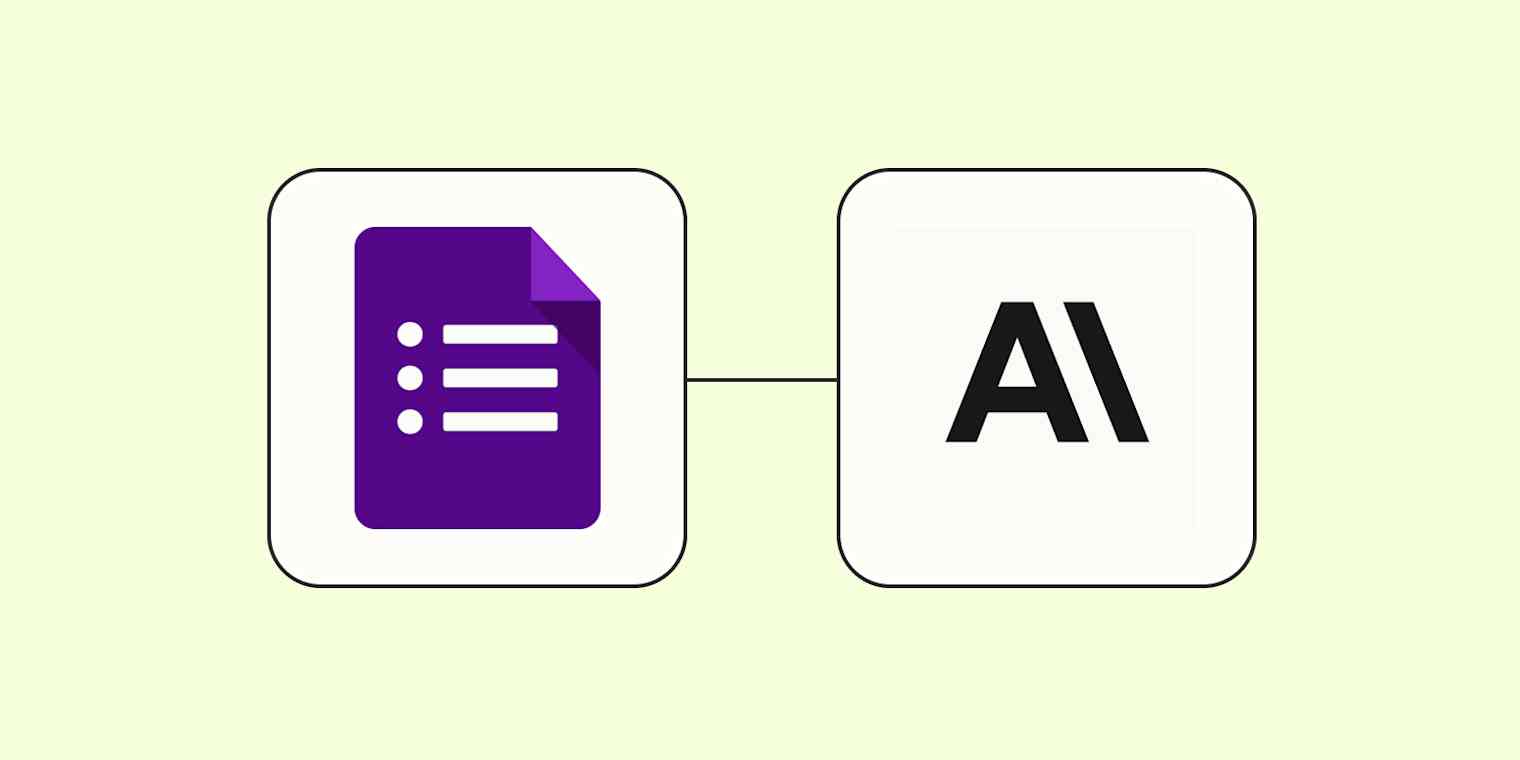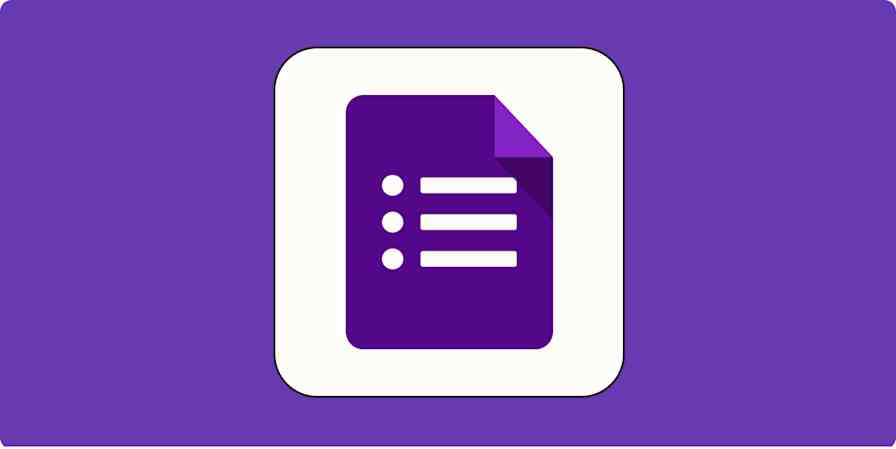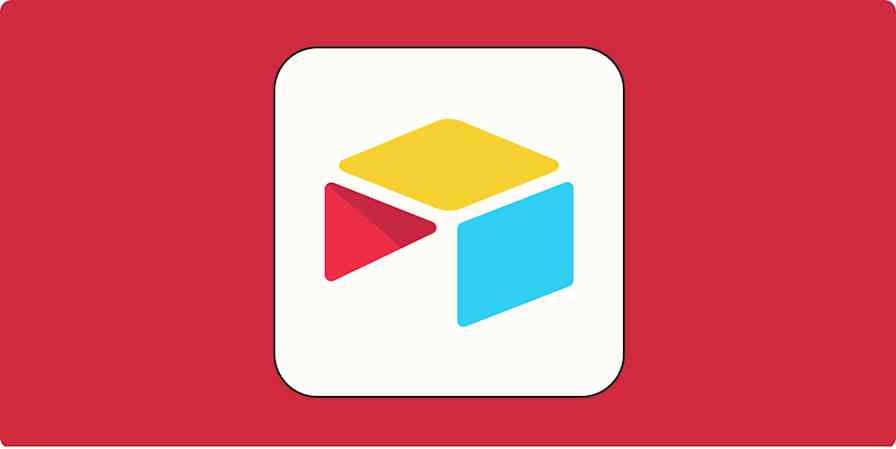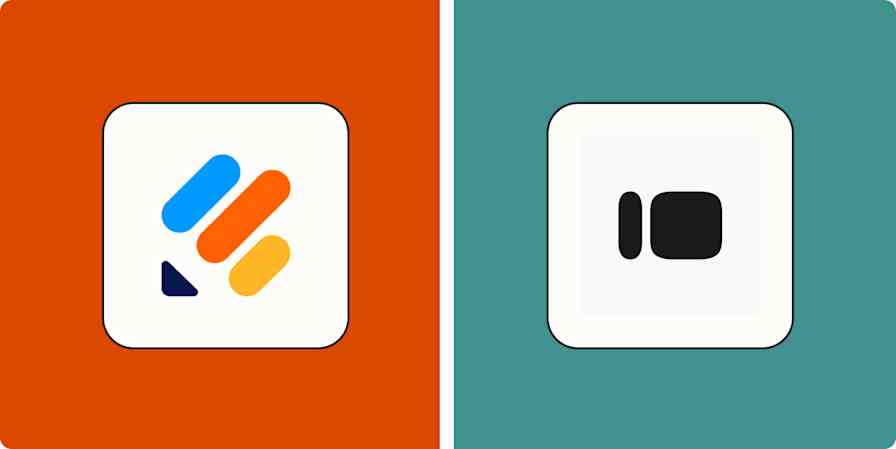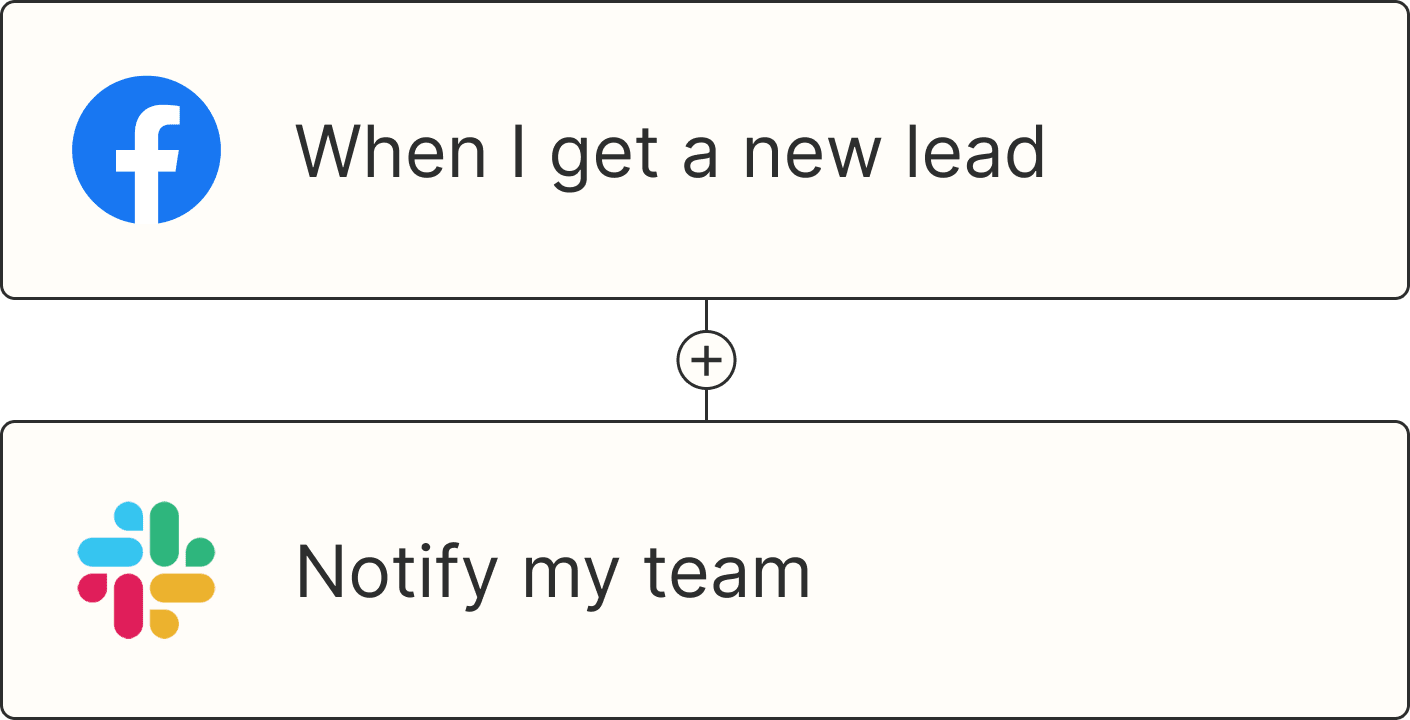Google Forms makes collecting responses easy, but everything that comes after gets messy. You're left scrolling through dozens (or hundreds) of submissions, trying to spot patterns, extract key insights, and turn the responses into something you can actually act on.
But what if your form responses could analyze themselves? With Zapier's AI orchestration platform, you can connect Google Forms to Claude with a Zap—Zapier's automated workflows. Every new submission gets instant analysis before landing in Google Sheets, so you can automatically add structured insights and feedback to your data.
I built this exact workflow to evaluate potential consulting projects as they come in. Now I know immediately which leads are worth pursuing and why. But the same approach works for any scenario where you need smart filtering. Automatically highlight feature requests and pain points from customer surveys. Or instantly score job applicants or group Q&A responses.
By the end of this tutorial, you'll have a flexible automation template that turns any Google Form into an intelligent data collection system. Let's get started!
Zapier is the most connected AI orchestration platform—integrating with thousands of apps from partners like Google, Salesforce, and Microsoft. Use interfaces, data tables, and logic to build secure, automated, AI-powered systems for your business-critical workflows across your organization's technology stack. Learn more.
What you'll build (workflow at a glance)

In this guide, you'll learn how to connect three simple tools to create a smart pipeline that transforms messy form responses into actionable data:
Google Forms gathers all the details you need from your customers or contacts
Anthropic (Claude) takes those responses and applies your custom grading or enriching criteria, returning an AI analysis
Google Sheets stores everything in organized rows, with both the original responses and Claude's analysis side by side
Use a different AI or spreadsheet tool? Zapier connects with thousands of apps. Search for your business-critical tool in our app directory.
Before you begin
Build your Google Form
If you don't already have your form ready, then open Google Forms and create a new form. Add every question you want Claude to consider. In my case, I'm building a project inquiry form that includes the following fields: name, email address, company name, project description, budget range, and target start date. Use whatever makes sense for your specific workflow. After each question, flip the Required toggle to On so every submission arrives with a full set of answers. This ensures Claude has enough context to score or summarize the response accurately.
When you're happy with the layout, click Publish, copy the responder link, and test the form once yourself. The screenshot below shows my consulting intake form for reference, but yours can be as simple or detailed as needed.
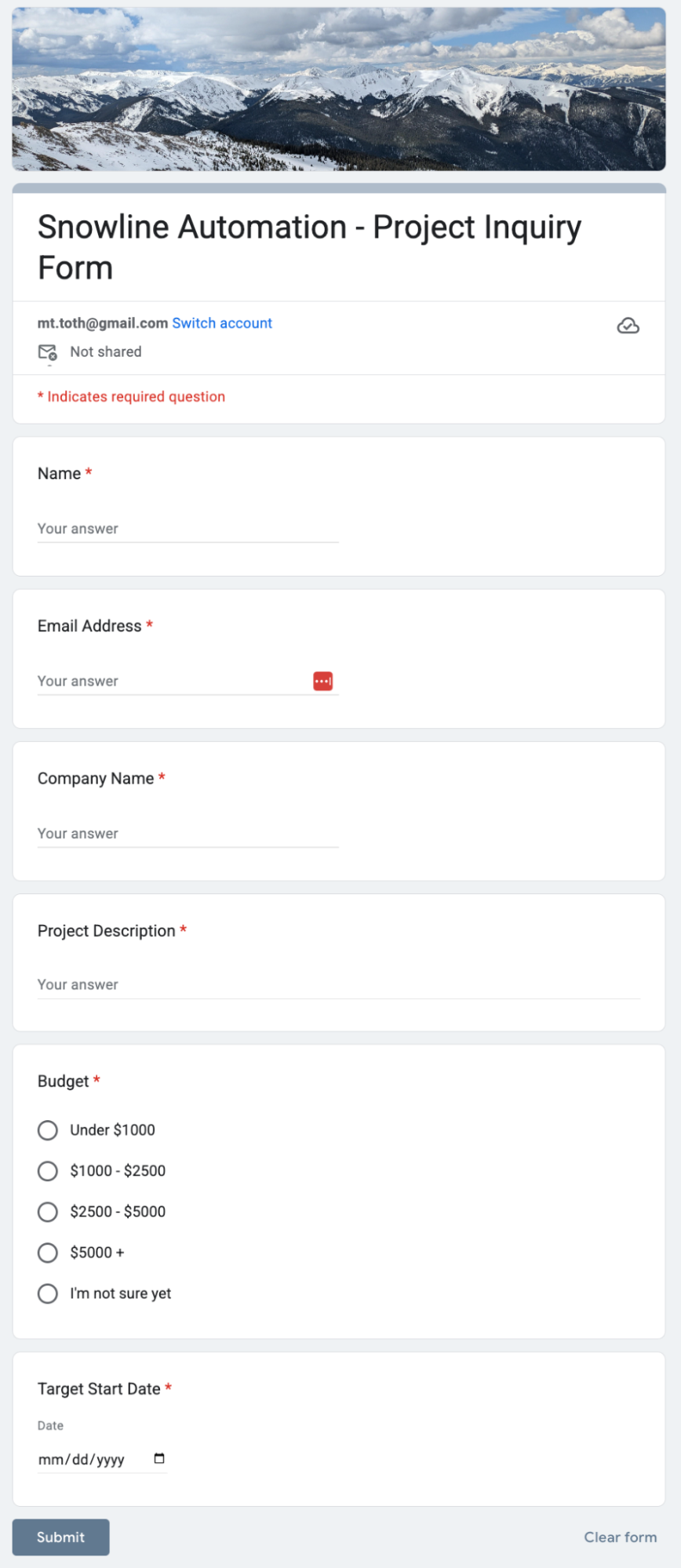
Prepare your Google Sheet
Next, head to Google Sheets and create a new spreadsheet. In the first row, add a header for every field in your form as well as a column where Claude's analysis will live. Put the Claude AI column on the right. Keeping Claude's output separate from the raw answers will make filtering and analysis easier later.
Freeze the header row (View > Freeze > 1 row) so labels stay visible as the sheet fills up.
Finally, give the sheet a memorable name so it's easy to select from Zapier's dropdown menu later.
Now you're ready to connect the sheet in the Zap. The screenshot below shows my project inquiries sheet for reference:

Sign up for and connect Anthropic to Zapier
For this Zap, you will need an Anthropic account connected to Zapier. Here's how to get set up.
Sign up for Anthropic if you haven't already done so. Then head to the Anthropic console at https://console.anthropic.com/settings/keys. Click Create API key, give it a label like "Zapier-production," then copy the key. You won't be able to view it again, so paste it somewhere safe for the next minute.
Now, you need to make sure you have credit in your Anthropic account. From the Anthropic billing page, fund the account with a small amount so your calls don't fail once the Zap is live. $5 is plenty for testing, but add more if you know you're going to turn on and use your Zap right away.
Next, connect your Claude account to Zapier. In Zapier, click App Connections in the left sidebar. Click + Add connection in the upper-right corner, search for Anthropic, then select it. When prompted, paste the API key you just copied, then click Yes, Continue. Zapier will confirm the connection.
Claude is a premium app—available on Zapier's paid plans. Learn more about premium apps.
Claude is now connected and available to use as an action step in any Zap.
Enhance Google Form Responses with Claude: Step-by-step tutorial
If you'd like to start with a template, click on the Try It button below to go to the Zap editor. Then, follow the directions below to set up your Zap. Otherwise, follow along to build it from scratch.
Generate an AI-analysis of Google Form responses and store in Google Sheets
Step 1: Set up your Google Forms trigger
Search for and select Google Forms for your trigger app and New Form Response for your trigger event. Then connect your Google account.
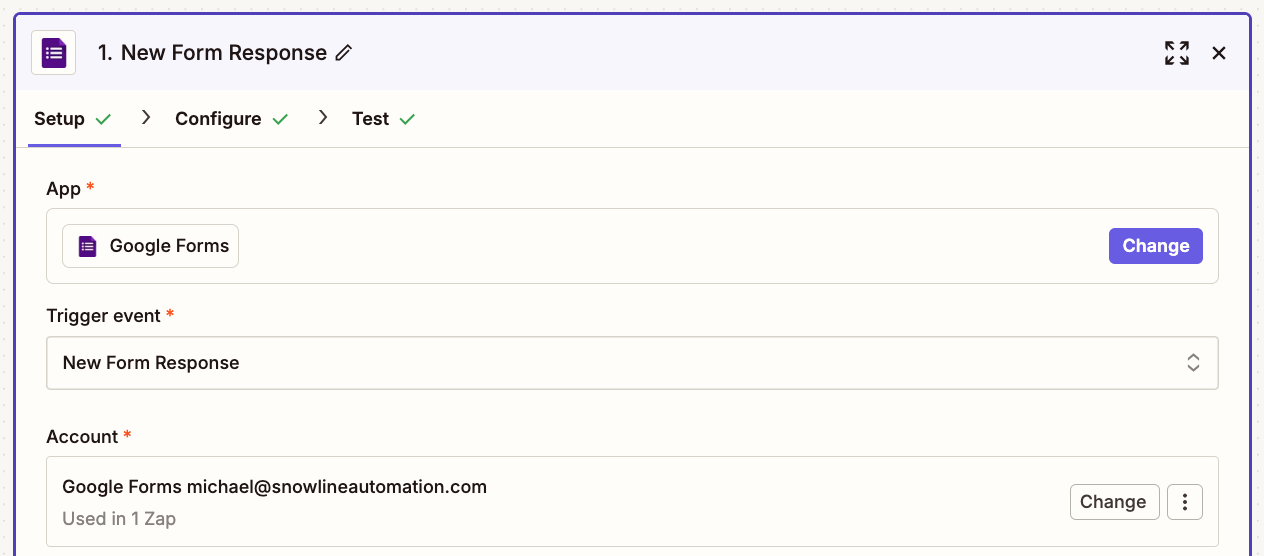
Next, select the form you created from the Form dropdown.

Finally, click Test Trigger to pull in a recent submission. If you don't have a recent submission, Zapier will generate one for you. However, your test will work better with a real submission, so I suggest you fill one out yourself and use that, if possible. Here's what my test looks like:
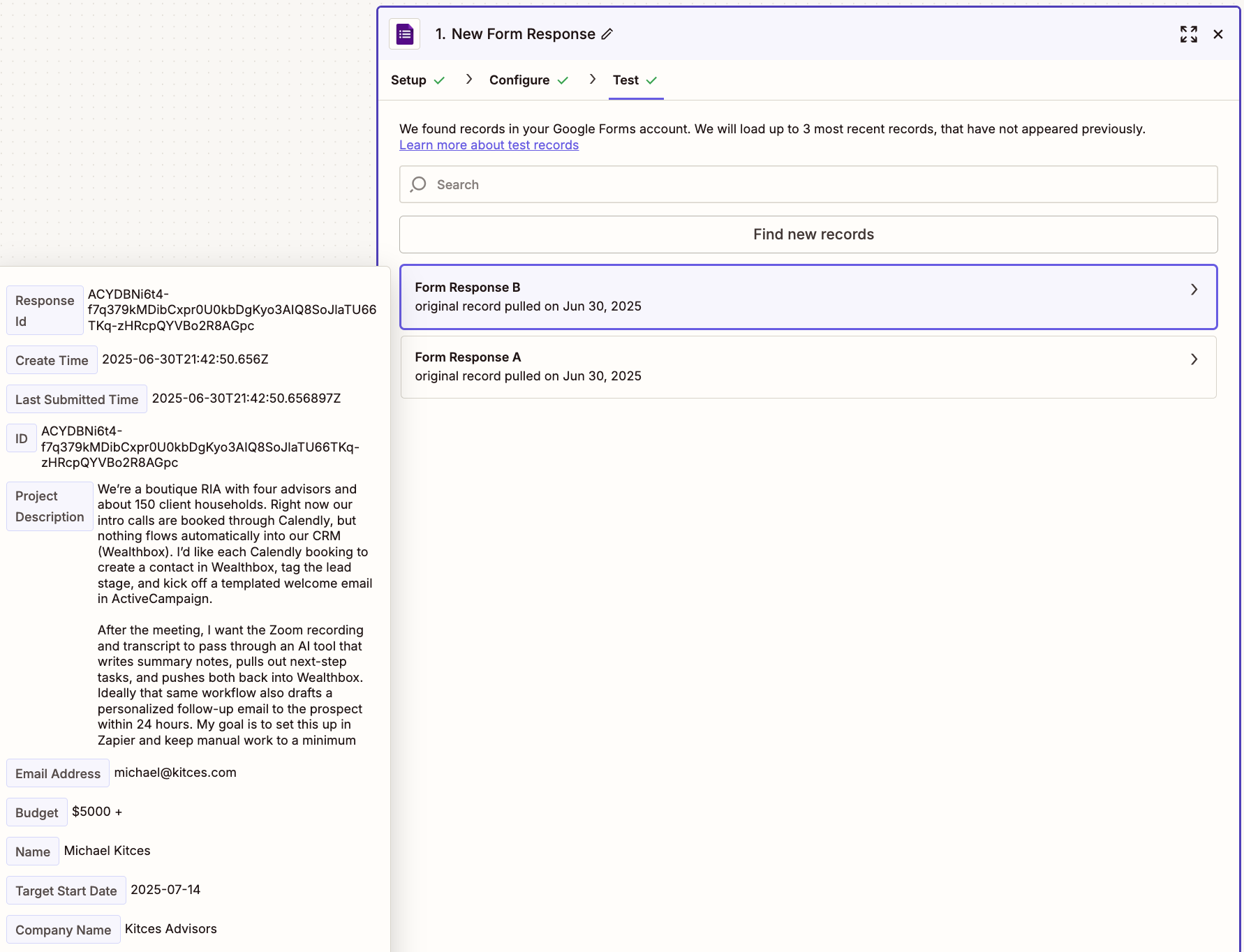
Step 2: Set up your Claude analysis step
Click the + icon at the bottom of your Zap to add an action step. Then search for Anthropic (Claude) for your action app and Send Message for your action event. If you're using the Zap template, these will be selected for you. Connect the Claude account you set up earlier.
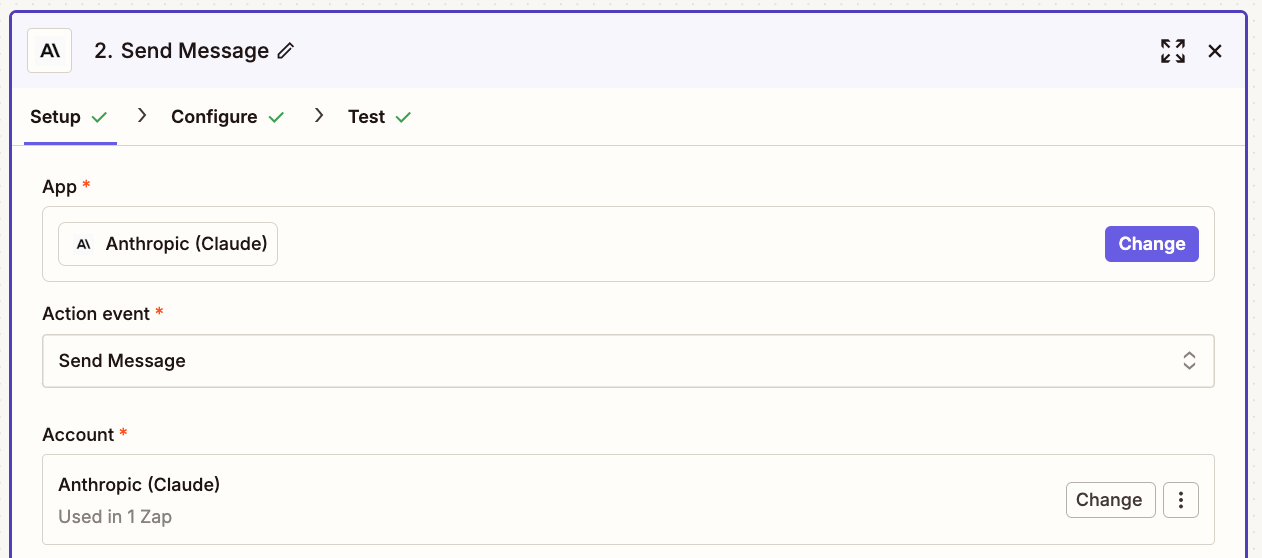
In the User Message field, write the prompt you'd like Claude to use for your data. In my case, I'm using Claude to score incoming leads. I'm using the prompt below, which gives more information about my automation consulting business and the lead scoring logic I'd like Claude to use. Feel free to copy mine as a template, or create your own to suit your needs.
You are Snowline Automation's lead-intake assistant.
Give a single 0-100 fit score (0 = totally irrelevant, 100 = perfect engagement I should pursue immediately).
Weight the score roughly as follows:
• 30 % Core tools mentioned (Zapier, Make, Airtable, Google Sheets/Forms, HubSpot/Wealthbox, Calendly, OpenAI/Claude, webhooks)
• 30 % Priority use cases (CRM↔Calendly sync, client onboarding, marketing/sales automations, AI meeting notes, dashboards & reporting)
• 20 % Budget & scope realism (>$2 500 total or long-term retainer, clear deliverables, reasonable timeline)
• 15 % Industry match (financial advisors, e-commerce, SaaS or tech-enabled services)
• 5 % Professionalism signals (organized description, clear goals)
Guidance:
90-100 = excellent fit, 70-89 = strong, 50-69 = borderline, below 50 = unlikely match.
**Return only the integer score, nothing else.**
Form data:
Respondent Name: {{Map from Form Response}}
Respondent Budget: {{Map from Form Response}}
Respondent Email: {{Map from Form Response}}
Respondent Company Name: {{Map from Form Response}}
Respondent Project Description: {{Map from Form Response}}
Respondent Desired Start Date: {{Map from Form Response}}
Replace the text in the {{Placeholder}} brackets above by mapping the relevant response fields from your form. Click the + icon at the top-right corner of the User Message Window, then select the data you'd like to use from the modal.
Finally, select your Claude model. Claude Sonnet 4 is a good model for most use cases, including the lead scoring I'm doing here. If you expect a very high volume, Claude Haiku 3 is the cheapest model, but it uses slightly less nuanced reasoning. For heavy analysis, long context, or detailed reasoning, Claude Opus 4 is a good option. For my use case (and most use cases), I'm happy with Claude Sonnet 4.
You can see my complete configuration, including field mappings, below:
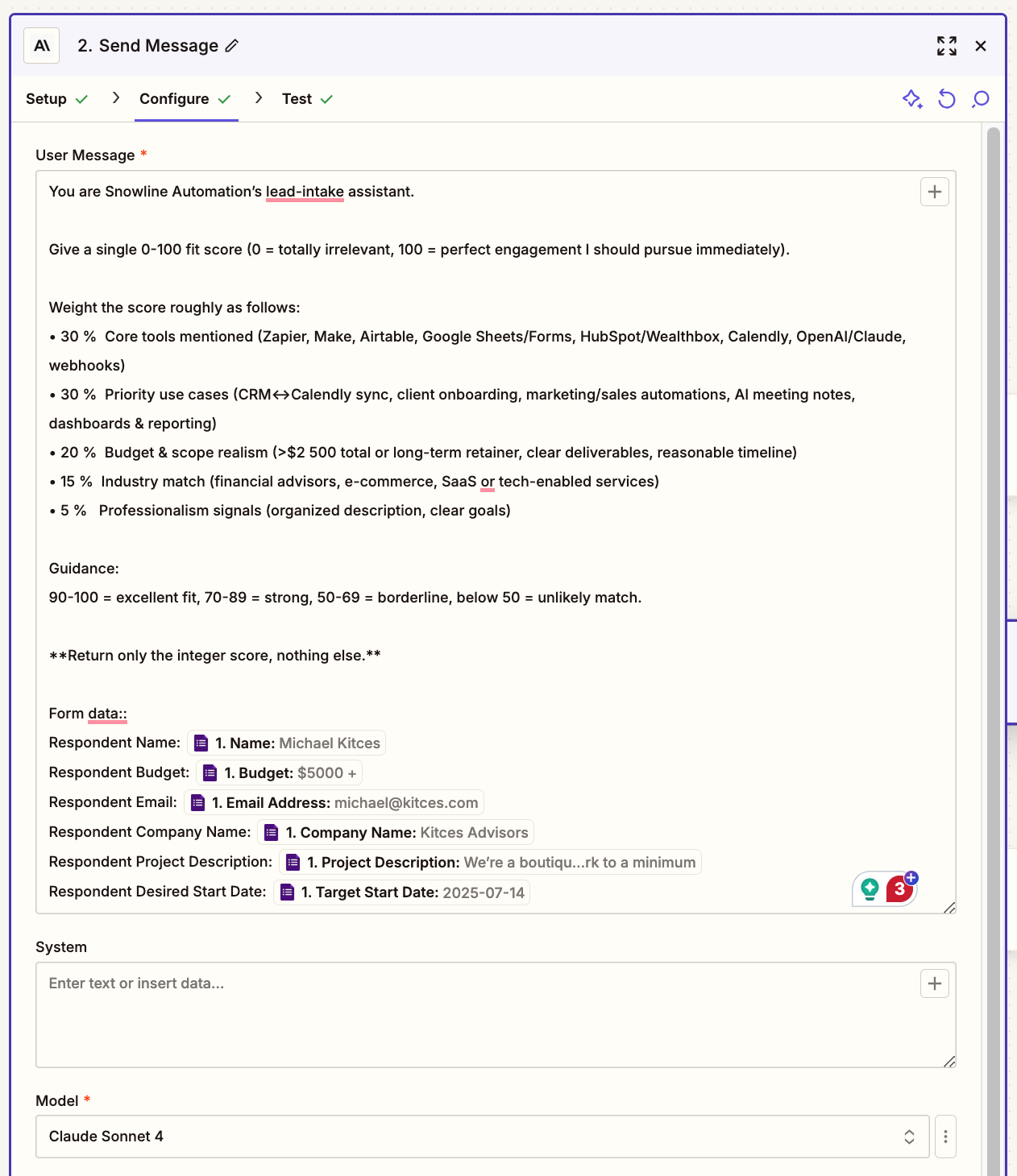
Next, click Test Action to send your prompt and data over to Claude for analysis. Verify the results match your expectations, and consider modifying your prompt if they don't. You can see my test below, with Claude's output at the bottom of the window. In this case, it scored the job a 98, indicating it's a near-perfect match. This makes sense because the job description aligns exactly with the type of work I do for my ideal clients.
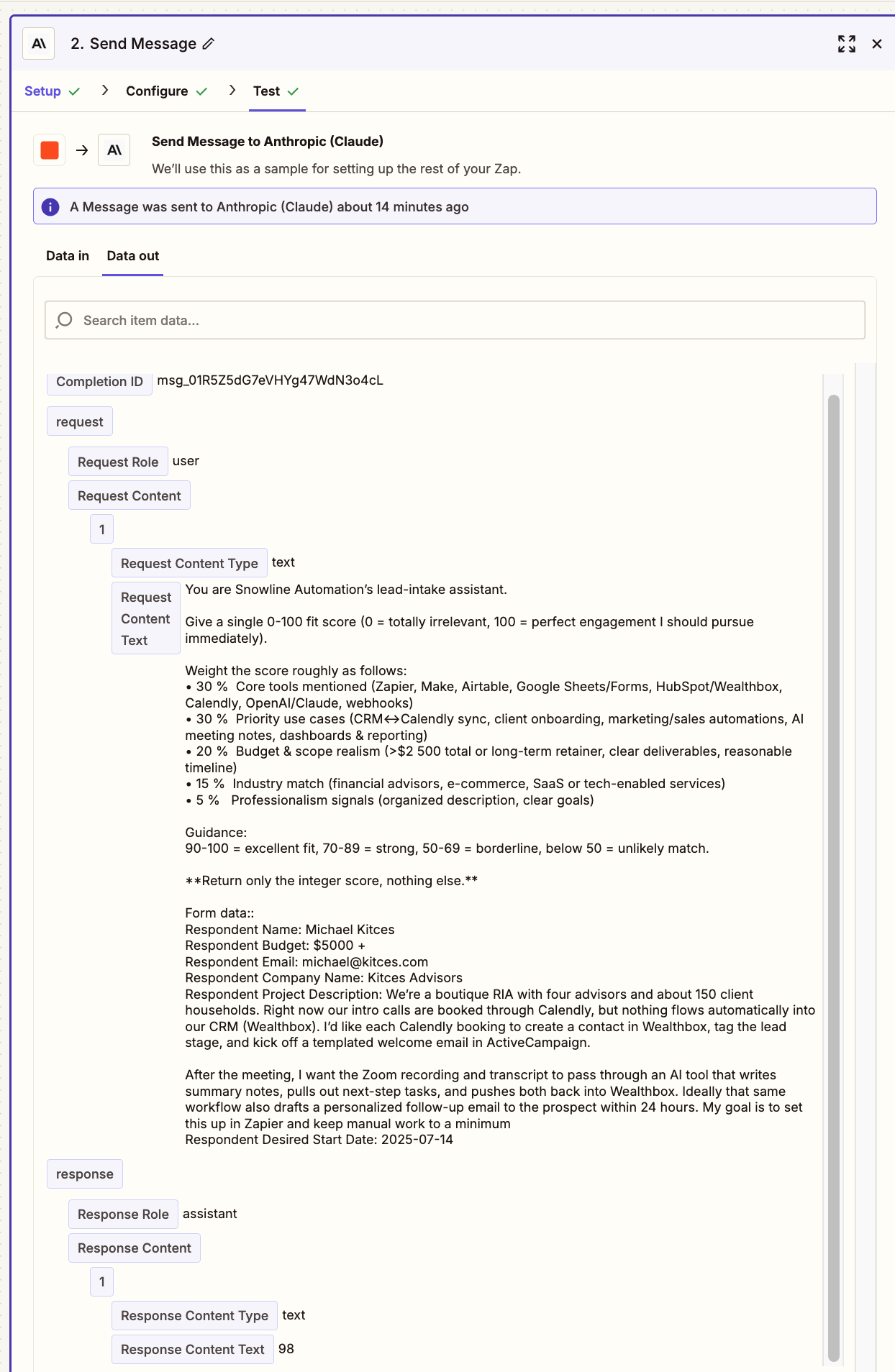
I'm happy with this result, so I'm ready to move on to the final step of this Zap build!
Step 3: Set up your Google Sheets action step
Click the + at the bottom of your Zap to add a final action step to your Zap. Search for and select Google Sheets for your action app and Create Spreadsheet Row for your action event. If you're using the Zap template, these will be selected for you. Then connect your Google account. Yours should look something like this:
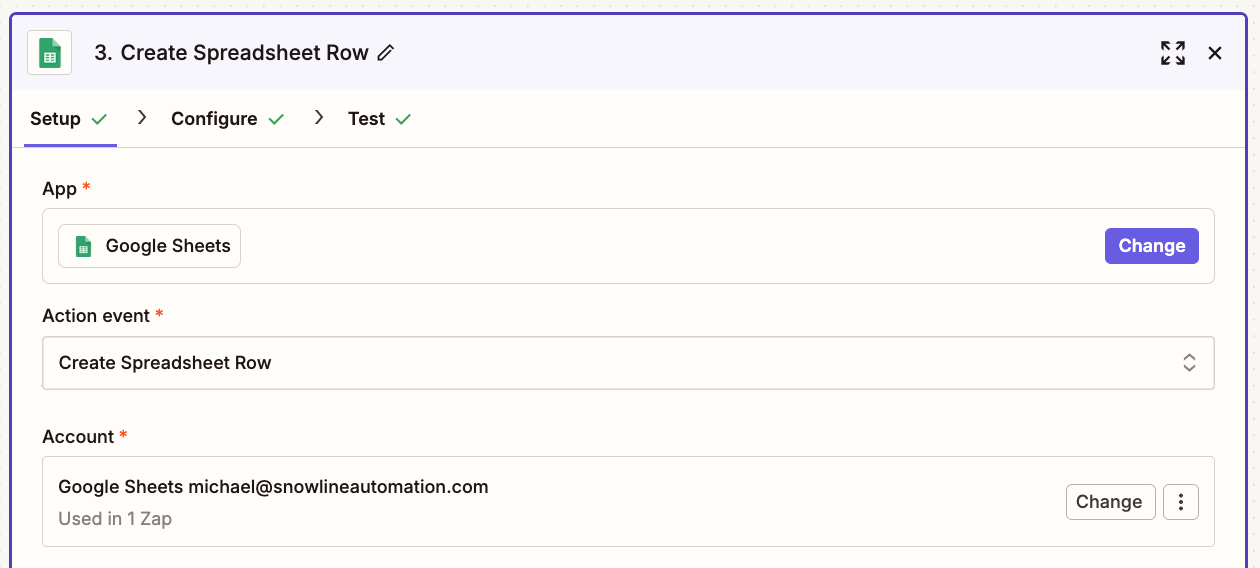
Now, select your Drive, Spreadsheet, and Worksheet. Map the fields from your Google Form response into their respective Google Sheets fields by clicking on the + icon in the right corner of each field. Finally, map the Claude response into the AI field in your Google Sheet. Here's what my complete configuration looks like:
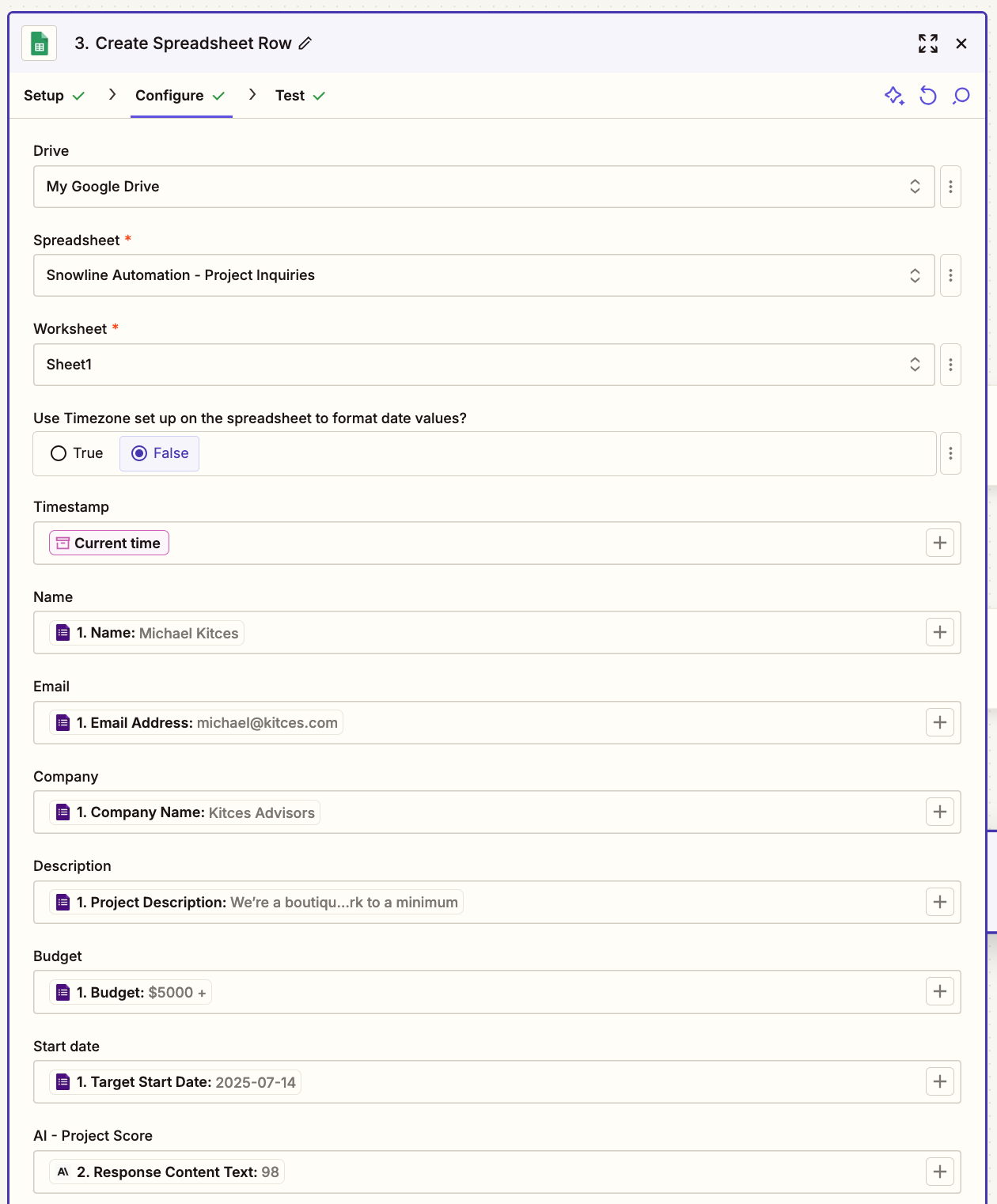
Finally, click Test Action. You should see a successful result like mine below, and when you check your Google Sheet, you should see that a row has populated.
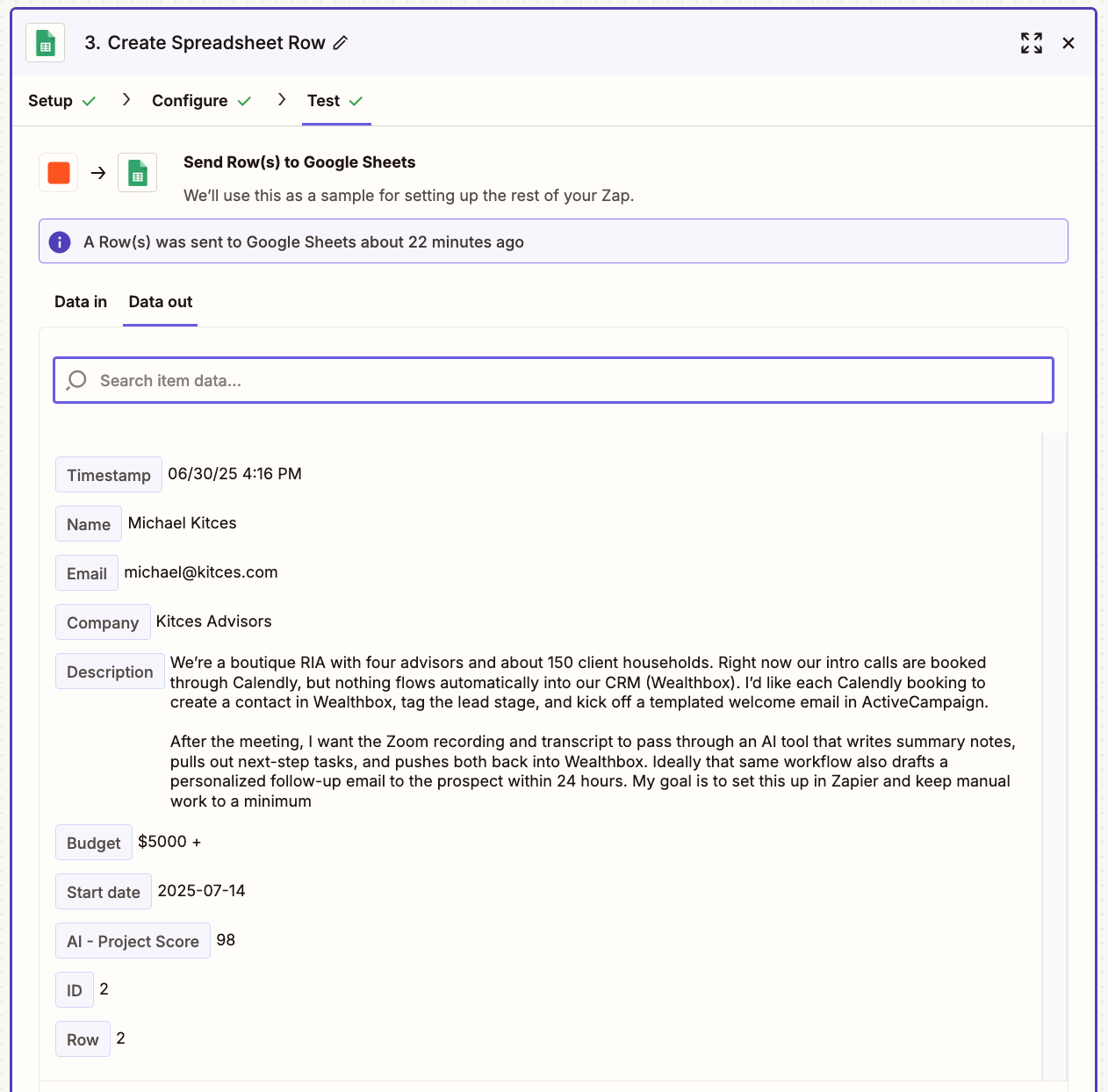
If all of your tests worked successfully and everything looks good, you're ready to publish your Zap. Give your Zap a descriptive name like "Lead qualifier: Form → Claude → Sheet." Then, click Publish. From now on, every form will automatically be sent to Claude for analysis and then make its way to your Google Sheet!
Extending the workflow
This is already a powerful workflow on its own, but there are plenty of ways I'm already considering extending it. With Zapier, this can be as simple as adding an additional action step or as complex as building an entire system of connected Zaps and tools. Here are some ideas I'm considering:
Slack ping: Send a Slack channel message whenever a new submission clears your target threshold so you can act on it immediately.
Auto-invite: Add a Calendly or Google Calendar step to email a booking link to leads with a score above, say, 70.
Richer AI scoring: Ask Claude to return multiple different scores (e.g., BudgetFit, ProjectFit, Complexity) as JSON. Then, map each of those into the Google Sheet for more advanced filtering.
Repurpose for other use cases: Swap the form questions and rubric to analyze product feedback, feature requests, or job applications. The core Zap stays the same, only the prompt changes.
Automate form data enrichment
With Zapier's AI orchestration platform, you can easily enrich your leads and form responses, giving you clarity to quickly jump on high-value opportunities. Don't treat AI as a stand-alone tool. Build a connected system that scales your work intelligently.
And consider this build a starter kit. Tweak the prompt, add branching steps, or repurpose the same pattern for product feedback, hiring funnels, or feature-request queues. The opportunities are limitless.
